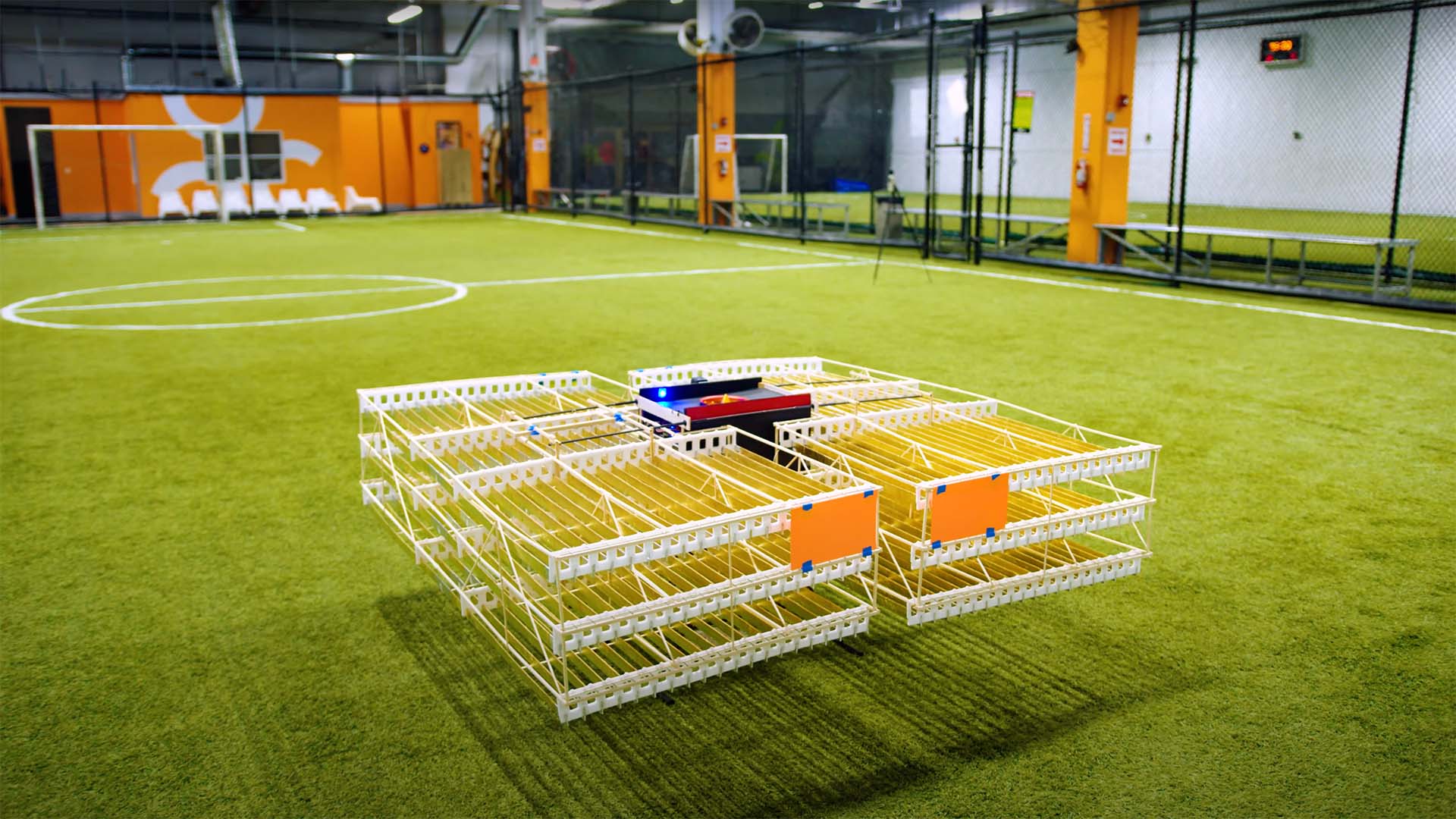
Replay: It seems like magic, but it's very real. Ion powered drones could offer silent flight, and one company, backed by the University of Miami, has made one that works.
If you've never heard of ion thrusters before, the whole concept sounds like a term invented for a cheap 1970s sci-fi series. Even if you've read about NASA's work on that very thing, we'd be forgiven for writing it off as a concept limited to to a nine-figure spaceflight projects as opposed to, well, drones. Crucially, what we might be talking about is drones that don't make much noise.
It turns out that the Biefeld-Brown effect (as it is properly known) is a very real phenomenon which can be demonstrated in the lab with something as simple as a Wimshurst generator. That's the piece of school physics equipment with the rotating belt and the winding handle and the big chrome sphere on top. Many people will remember a tweed-clad physics teacher with a smile on his face asking a pretty girl with long hair to hold onto that chrome sphere, and then lauging at her squeals as her coiffure levitated impressively (and semi-permanently) into a near spherical cloud.
Beyond making Jessica shriek and pat desperately at her head, it's clear from that experiment that electrical fields can create mechanical forces, although what we've just described isn't an example of Biefeld-Brown at work. That's a slightly more esoteric effect which relies on the shape of electrical conductors. Place two electrodes a short distance apart and apply a voltage across them and, depending on the air pressure, voltage and distance, charge flows from one to the other. If the two electrodes are roughly the same shape, the effect on the air surrounding both of them is more or less the same, and nothing much moves beyond the electrical charge itself.
It seems like magic, but isn't
Make one of the electrodes into a point, though, and things change, and here beginneth the physics lesson. Electrical charge is preferentially emitted from the very tip of the point toward the less-pointy electrode, if only because the point is nearest (and there's some odd physics about how charge likes to emit from pointy objects, too). That means the chargedensity is much higher near the pointy electrode than it is the not-so-pointy electrode. Set the voltage high enough, and that higher charge density becomes enough to ionise (that is, remove electrons from) atoms in the air nearby the point.
When that happens, the resulting ionised air now has an electrical charge, and since dissimilar charges attract one another, that ionised air moves toward the opposite electrode. That might not be too exciting - it'll hit the electrode and pretty much just stop. In gases, though, the moving ions can interact with other, non-ionised atoms, and since they're not charged, once they're moving, they keep moving - and create a breeze. YouTube is replete with videos of people blowing out candles with electrostatic air-movement devices.
Blowing a candle out is quite some distance from being able to blow a small machine into the air using the same physics, but there's nothing, in principle, preventing electrostatic air movement being used to create jet engines, vacuum cleaners or, yes, drones. It's an effect people have been playing with for most of the latter half of the twentieth century and is not a new discovery; similar flying machines have been called a high-voltage lifter or ionocraft.
Practicality
The practical problems are significant, and it's taken until now for control and particularly the power technologies (for which read: lithium ion batteries) to become practical. But practical it is, and an ionocraft drone was shown at least a year ago by a company called Undefined Technologies. The company refers to its design as a silent drone, and as with any developing technology the specifications are underwhelming: current designs will fly for a quarter of an hour with a payload of under a kilo. It also seems likely that developed versions of this technology will have to move more air to increase payload capacity, and what's currently silent might inevitably end up creating at least some detectable sound of rushing air.
And yes, this is functionally the same principle as NASA's ion thrusters; the difference is that on a spacecraft there's no gas to ionise and we must take our own as part of the consumables supplies for the engine, which will be ejected overboard as we fly along. Still, the spaceflight community's interest in this technology is that, being electrically powered, it can derive its energy from a very (very) high power density source such as a nuclear reactor. It seems unlikely that any of the world's aviation or nuclear regulators are likely to let us build camera platforms around that sort of technology, but still. What seems likely is that this technology might, if we found a way to make it more efficient, have the potential to make sound recordists a lot happier than current drones, which are noisy enough to make more or less everything they're involved in an MOS shot.
Tags: Technology Drones Futurism


Comments